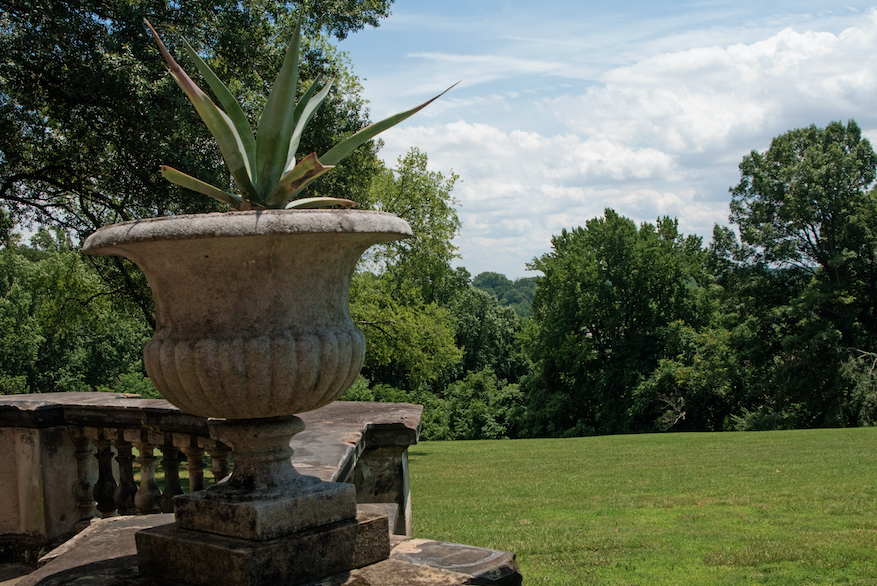The classic Virginia garden
Published 6:35 am Thursday, September 8, 2016

- The gardens at Agecroft Hall feature large terraces, broad views of the James River, a grass maze and many garden rooms with box hedges and an array of plants.
If you grew up in Virginia, chances are gardening is just an inherent part of who you are. You know what I mean — you can root azaleas and boxwood without even thinking about what you’re doing; you find the peculiar scent of boxwood somehow comforting; and you never met a fellow gardener with whom you weren’t willing to share plants and information. I bet you even have a garden of pass-a-long plants. We Virginians have been gardeners for generations, and we take great pride in our gardens.
Serious gardening in Virginia started during colonial times. Hardscrabble farmers raised herbs and vegetables to keep from starving. Meanwhile, rich plantation owners built large estates along the James River and constructed elaborate gardens that incorporated all the latest trends from 17th and 18th century England. They read the latest European gardening treatises, ordered plants from England, and even swapped specimens with fellow gardeners around the world. Lady Jean Skipwith’s 18th century wish list of plants that she wanted to buy sounds remarkably similar to mine today.
The gardens of well-to-do colonial Virginians incorporated the necessities needed for survival and then added aesthetic elements for private enjoyment and show. These gardens had broad vistas, often leading to the river. There were orchards, kitchen gardens and elaborate pleasure gardens with paths; bordered beds laid out in geometric patterns; and seating areas with elegant urns and statuary. As might be expected, most of these gardens included box borders, tulips, lilies, French marigolds, herbs and many other plants that were fashionable in England. Most of these gardens also included a wide array of native plants — bloodroot, hepatica, Virginia bluebells and columbines. Native trees were frequently collected in the forests and transplanted to artificially created woodlands.
Over the years, key elements of this style of gardening moved into the vernacular. By the late 1800s, most rural farmhouse gardens had boxwood, at least a shaded walkway or two, and bordered beds filled with tulips, hyacinths and daffodils in spring. The influence of tradition is strong in Virginia gardens.
By the early 1900s, Virginians were becoming interested in Colonial Revival architecture and gardens. Owning a country house with elaborate gardens was de rigueur for wealthy Virginians. Most of these estates featured Georgian architecture and gardens reminiscent of those at early plantations. The most influential landscape designer for this movement was Charles Gillette, a transplanted Virginian who melded ideas from Gertrude Jekyll’s work in England and old colonial plantations into a look that worked well in our hot, humid climate. As might be expected, a Charles Gillette garden included hedges, walkways, broad open expanses, and also enclosed, private gardens with sculpture, interesting gates, benches, retreats and box edged beds. He also continued the use of native plants. Over the years, Gillette designed hundreds of gardens, everything from elaborate estates, such as Agecroft Hall and Virginia House, to small gardens in Farmville, Hampden Sydney and Chase City. The 8-acre gardens at Virginia House featured more than 1,000 plants and even included a bog garden.
The style of these gardens eventually came to be known as the Virginia garden and was considered the essence of Southern garden elegance. Even today, the influence of this style is quite strong. While most of us no longer have sweeping views of scenic rivers, you can still find plenty of boxwood, garden paths and spring bulbs. Just check out the gardens around Farmville and you’ll see how the distinctive style of the Virginia garden lingers. It’s peaceful, restful, not necessarily showy, but with a strong sense of self-confidence. These gardens say they’re firmly rooted in tradition, but not afraid to add new elements, such as modern sculptures. They’re elegant, but not at all stuffy.
And so, if your grandmother had colorful spring perennial flower borders, loved her dogwood trees, and knew exactly how to root boxwood, then you can smile and know that she (and you) are part of a long Virginia gardening tradition. Enjoy the tradition and don’t be afraid to change things up to make it your own. Gardening is all about fun and sometimes about honoring family traditions, too.
Cynthia Wood is a master gardener who writes two columns for The Farmville Herald. Her email address is Cynthia.crewe23930@gmail.com.





